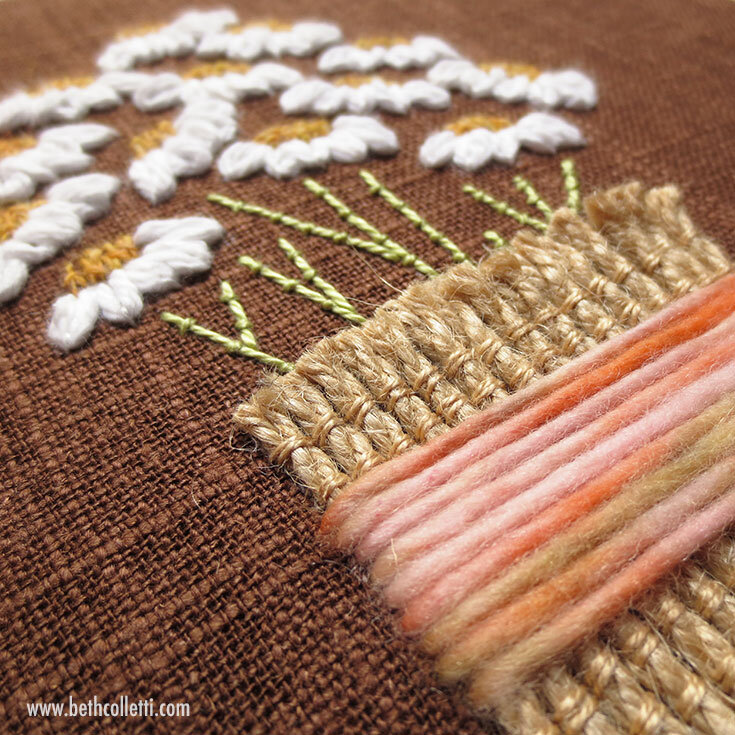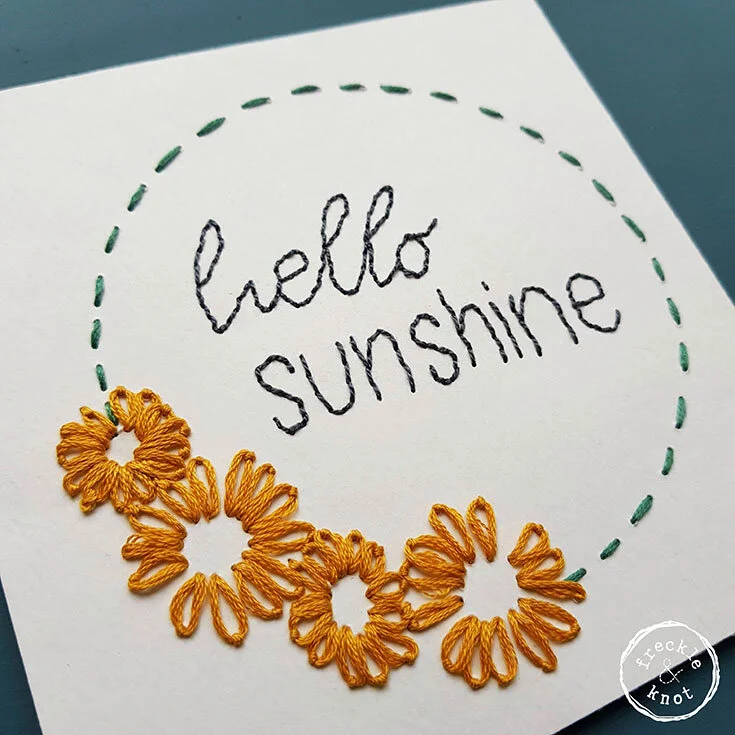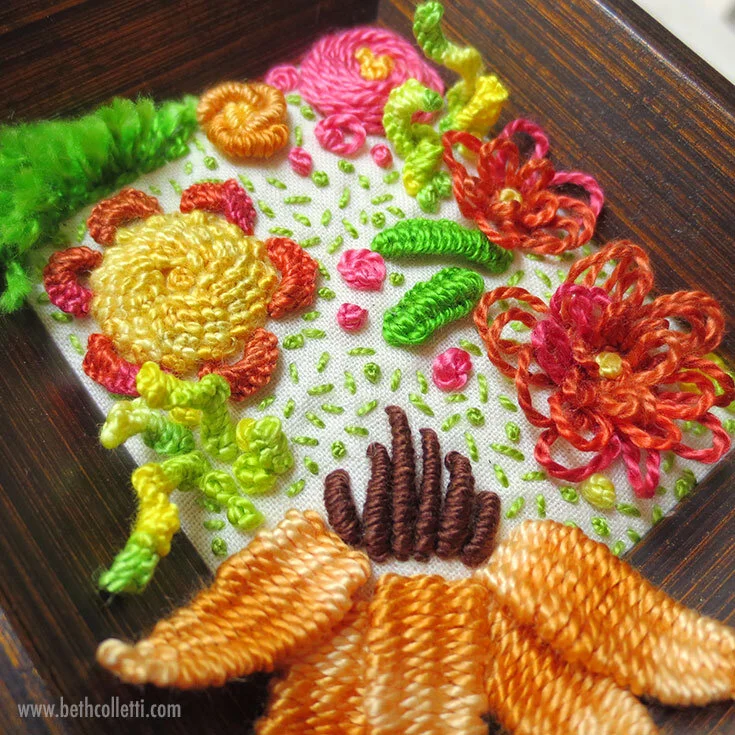Adding texture and dimension to your hand embroidery are as much about the tactile feel of raised fibers as they are about the contrast between surfaces…the difference between raised and flat, smooth and bumpy, round and straight, shiny and matte, cotton and wood. Mixing and matching these elements in your work will add a ton of visual interest to your embroidery projects as well as stretch your skills, helping you take your stitching to the next level.
The possibilities for adding texture and dimension to your embroidery are endless, making the exploration that much more fun. Here are just a few ways you can begin to play with enhancing the composition of your hand embroidery projects to include more texture.
Choose a textured fabric.
In this article about fabrics to use for hand embroidery projects, I share a number of different options to try with your stitching. Some, like cotton, have a rather smooth finish and tight weave so they won’t offer much texture on their own, but they can be a great backdrop for more textured threads or other objects. Other fabrics such as linen or burlap can be a wonderful canvas for different threads, adding interest with their own woven surfaces.
Try stitching on a heavily textured fabric like burlap.
Use 3D objects.
Buttons, beads, and sequins may be some of the more commonly used dimensional objects that you see in embroidery projects. But consider other objects that are less common such as charms, small mirrors, keys or other raised objects that might be used in mixed media art. If a 3D object has a hole in it, chances are you can attach it to your work! Even found objects like twigs or seashells can be attached with couched stitches. These unique items can become a dimensional focal point for your work or simply be added to a freestyle embroidery piece.
Add dimension to embroidery with 3D objects.
Stitch with a variety of threads and fibers.
Six-strand embroidery floss and pearl cotton floss are probably two of the most popular threads to stitch with today. But don’t let those threads limit you when it comes to adding texture to a project. Try thicker fibers such as tapestry wool or hand-dyed yarn on fabrics with a looser weave, like linen. Or stitch with silk ribbon for a softer appearance. You can even couch trims such as jute rope, rick rack or lace for unique, dimensional elements. Or mix and match a variety of threads to highlight the contrasting fibers in your stitching. Read this article for more thread ideas that you can try in hand embroidery.
Stitch with a variety of threads and fibers to add texture to hand embroidery.
Embroider on non-woven surfaces.
Although there are many different fabrics you can stitch on to add texture to your hand embroidery, there are also plenty of other mediums you can try. Wood, metal, paper, plastic and even natural items such as dried leaves all lend contrasting textures to stitched thread fibers. Visit this Pinterest board for embroidery and cross stitch done on non-woven surfaces.
Add texture by embroidering on non-woven surfaces. Find this embroidered paper project here.
Try hand appliqué.
Felt appliqué (whether done with wool felt or craft felt) is a great way to learn layering one fabric piece on top of another and allows a lot of experimentation with dimension and texture. For larger appliquéd pieces, you can even add some Poly-Fil stuffing underneath for some added lift to your fiber art. Don’t forget to add embroidered embellishments to your felt once you have your fabric layers in place.
Create dimension by layering fabrics with felt appliqué techniques.
Use dimensional stitches.
When it comes to adding dimension to hand embroidery, the stitches themselves add lots of visual interest to a piece. Contrast knots with smooth line stitches and incorporate more intermediate woven and textural stitches that will pop off of the surface of your work. If you have some embroidery experience and are ready to expand your knowledge of stitches and start adding more texture and dimension to your work, join my online embroidery course Step-by-Step Stitches for Creative, Textured Embroidery.








